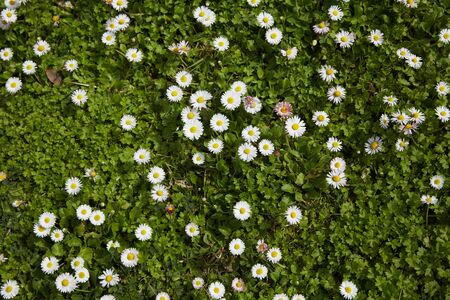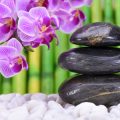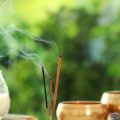1. Herbal Teas and British Bedtime Traditions
Herbal teas have long held a special place in British culture, particularly as part of the evening wind-down ritual. While the classic cup of black tea is an icon of British daily life, more people across the UK are turning to herbal infusions like chamomile, lavender, and other soothing blends to help them relax before bedtime. These naturally caffeine-free options are now found in every supermarket and local shop, reflecting their popularity among those seeking a restful night’s sleep. Herbal teas offer a gentle way to pause, reflect, and transition from the bustle of daily routines into a calmer state of mind. From sharing a pot with family to enjoying a solitary mug while reading before bed, the act of brewing herbal tea has become woven into the fabric of British evening traditions, symbolising comfort, care, and a mindful approach to relaxation.
2. Chamomile: The Quintessential British Bedtime Brew
Chamomile has long been a fixture in British households, renowned for its gentle aroma and calming properties. In the UK, reaching for a cup of chamomile tea before bed is almost as traditional as the afternoon brew, with its roots stretching back through centuries of herbal practice and folklore.
Historical Roots in British Culture
The use of chamomile in Britain dates back to medieval times, when it was cultivated in monastery gardens and prescribed by herbalists for its soothing qualities. Over time, it became a household staple, often passed down through generations as a natural remedy for sleeplessness and mild ailments. Today, it remains firmly woven into the fabric of British evening routines—its popularity undiminished by changing trends.
Flavour Profile: Delicate Yet Distinctive
Chamomile tea is appreciated not just for its effects but also for its flavour. The infusion is light golden in colour, with a gentle floral sweetness and subtle apple undertones. Its taste is mellow enough to be enjoyed on its own or enhanced with a touch of honey or lemon—making it accessible even to those who typically shy away from stronger herbal brews.
Key Features of Chamomile Tea
| Aspect | Description |
|---|---|
| Origin | Native to Europe; widely cultivated across the UK |
| Main Active Compounds | Apigenin, flavonoids, antioxidants |
| Flavour Notes | Mildly sweet, floral, hint of apple |
| Typical Preparation | Dried flower heads infused in hot water; often consumed plain or with honey |
| Cultural Associations | Linked with relaxation and bedtime rituals; referenced in classic British literature and folk remedies |
Proven Soothing Effects: What Science Says
The reputation of chamomile as a bedtime brew isn’t mere superstition. Modern studies have confirmed that chamomile contains compounds like apigenin that bind to receptors in the brain responsible for sleepiness and relaxation. Regular consumption has been shown to reduce anxiety levels and improve overall sleep quality—a finding that supports the age-old British habit of winding down with a warm mug at night.
A Modern Classic in UK Homes
Whether sipped solo or blended with other herbs, chamomile’s enduring appeal lies in its gentle support for restful nights—a comfort as welcome now as it was centuries ago.
![]()
3. Lavender: From Cottage Gardens to the Teacup
Lavender, with its unmistakable fragrance and striking purple blooms, has long been a cherished presence in British cottage gardens. In recent years, it has made a graceful transition from garden border to teacup, becoming a popular choice for those seeking tranquillity at bedtime. The gentle floral notes of lavender tea evoke the scent of an English summer evening, offering a soothing experience that is as comforting as it is fragrant. Traditionally, lavender has been used across the British Isles not only for its calming aroma but also for its natural ability to ease tension and promote restful sleep. Herbalists and home brewers alike praise lavender tea for its subtle flavour—delicate yet distinctive—with just enough sweetness to delight the palate without overwhelming it. A cup of lavender tea before bed can be a simple ritual to help quiet the mind after a busy day, making it particularly well-suited to modern life’s demands. Whether enjoyed on its own or blended with other soothing herbs such as chamomile or lemon balm, lavender remains a timeless remedy in the UK’s herbal tradition—a bridge between the beauty of nature and the comforts of home.
4. Valerian, Lemon Balm, and Other Local Sleepytime Brews
While chamomile and lavender often steal the spotlight, the UK’s herbal tradition has far more to offer those in search of a soothing nightcap. British herbalists have long turned to other native and well-acclimatised plants for their calming properties. Two such favourites are valerian root and lemon balm, both commonly found in British gardens and health food shops.
Valerian Root: The British Herbalist’s Secret Weapon
Valerian (Valeriana officinalis) is renowned for its sedative qualities. Used since at least the Middle Ages in Britain, this unassuming root is said to promote deep, uninterrupted sleep. Many herbalists recommend valerian tea as an alternative to pharmaceutical sleep aids, though they advise starting with a small amount due to its strong earthy flavour and potent effects.
Lemon Balm: A Gentle Classic from Cottage Gardens
Lemon balm (Melissa officinalis) boasts a delicate citrus aroma and gentle calming effect. It’s a staple in traditional English cottage gardens, where it has been brewed for centuries to ease anxiety and insomnia. Modern herbalists appreciate lemon balm for its ability to relax the mind without causing drowsiness the next day—a key benefit for those seeking restful but clear-headed mornings.
Other Noteworthy Local Sleepytime Herbs
Beyond valerian and lemon balm, several other herbs feature in UK bedtime blends. These include passionflower (often grown in sheltered spots), oat straw (a byproduct of local oat crops), and hawthorn blossom. Each brings a unique profile of calming compounds, contributing both to relaxation and a distinctly British flavour palette.
Comparison Table: Popular UK Herbal Sleep Teas
| Herb | Traditional Use | Main Benefit | Typical Flavour Notes |
|---|---|---|---|
| Valerian Root | Sedative since medieval times | Promotes deep sleep | Earthy, musky |
| Lemon Balm | Cottage garden staple for calmness | Eases anxiety; gentle relaxation | Citrus, fresh |
| Passionflower | Occasionally used by herbalists | Mild tranquilliser effect | Slightly grassy, floral |
| Oat Straw | Byproduct of local agriculture | Nourishing nerves; mild calmness | Mild, sweet, hay-like |
| Hawthorn Blossom | Traditionally for heart health & calmness | Mood support; relaxation aid | Mildly floral, apple-like |
5. Where to Find Quality Herbal Teas in the UK
When it comes to enjoying a truly restful night, sourcing high-quality herbal teas is just as important as selecting the right blend. Whether you prefer the gentle notes of chamomile, the soothing aroma of lavender, or wish to explore lesser-known botanicals, there are plenty of options throughout the UK to suit every palate and preference.
Local Health Shops and Independent Grocers
One of the best ways to discover fresh and authentic herbal teas is by visiting your local health food shops and independent grocers. These places often stock a thoughtfully curated selection of loose leaf and bagged herbal teas from smaller British producers. Staff at these shops tend to be knowledgeable, offering guidance on which blends might help with relaxation or sleep. It’s also common to find organic and ethically sourced options, ensuring your nightly brew is both delicious and responsibly produced.
Trusted British Brands
If you’d rather shop online or want consistency in your cuppa, several well-established British brands are renowned for their herbal tea offerings. Look out for familiar names like Twinings, Pukka Herbs, Clipper, and Heath & Heather. Each of these companies brings decades (if not centuries) of expertise to their blends, with many focusing on sustainability and natural ingredients. For those looking for something bespoke, newer artisan brands such as Bird & Blend Tea Co. or T2 are worth exploring—both offer innovative blends that go beyond the classic chamomile or lavender.
Supermarkets and High Street Stores
For convenience, most major UK supermarkets—such as Waitrose, Sainsbury’s, Tesco, and M&S—carry a wide range of herbal teas in both loose leaf and bagged varieties. While you may not find as much specialist advice here, supermarket own-brand herbal teas have improved significantly in quality over recent years. They’re a practical option when restocking your kitchen cupboards or trying out new flavours without breaking the bank.
Farmers’ Markets and Local Producers
If supporting local businesses is important to you, farmers’ markets can be an excellent source for discovering small-batch herbal teas made from locally grown herbs. Many producers take pride in their craft and are happy to share insights into how their teas are blended for maximum flavour and effect.
In summary, whether you’re seeking classic blends or curious about new botanicals for restful sleep, the UK offers a wealth of options—from neighbourhood health shops to trusted household brands. With a little exploration, you’ll soon find the perfect herbal tea to make your evenings that bit more relaxing.
6. Brewing Tips: Making the Most of Your Nighttime Herbal Infusion
If you want to unlock the full calming potential of herbal teas like chamomile, lavender, and their delightful companions, the brewing process is just as important as your choice of blend. In the UK, where winding down with a cuppa is something of an evening tradition, making your bedtime tea can become a soothing ritual in itself. Here’s how to brew for both flavour and relaxation.
Water Temperature Matters
Herbal infusions are best made with water that’s just off the boil—around 95°C for most blends. Boiling water can scald delicate herbs like chamomile and lavender, dulling their subtle flavours and potentially reducing their calming effects. For loose leaf teas, use a kettle with variable temperature settings if possible. If you’re using teabags, simply let your boiled water sit for a minute before pouring over your herbs.
Steeping Time: Patience Pays Off
Most bedtime herbal teas benefit from a longer steep—anywhere between 5 to 10 minutes. This allows the essential oils and active compounds to be fully released, enhancing both taste and efficacy. For a stronger infusion or if you’re using whole dried flowers (as is common with UK-grown chamomile), lean towards the longer end of this range. Covering your cup while it steeps will help trap those soothing aromas too.
Rituals to Enhance Relaxation
In British homes, preparing tea is often about more than just the drink—it’s an opportunity to slow down. As you brew your chosen night-time blend, consider dimming the lights or playing gentle music. Take time to inhale the fragrant steam before sipping; this mindful moment can help cue your body for sleep. Some find that keeping a dedicated teapot or mug for evening brews adds a comforting sense of routine—a small but meaningful way to signal bedtime.
Personal Touches for Extra Comfort
If you like a touch of sweetness, add a little local honey after brewing rather than during (to preserve both flavour and beneficial enzymes). A splash of oat milk—a popular choice in many UK kitchens—can soften robust herbal blends like valerian or passionflower. Experiment with different combinations until you find what feels most restful for you.
Ultimately, whether you opt for classic chamomile or explore lesser-known botanicals, taking care with your brewing technique ensures each cup is not just tasty but truly restorative. So next time you settle in for the night, let your herbal infusion be more than just a beverage—make it an act of self-care rooted in tradition and tailored for tranquillity.


